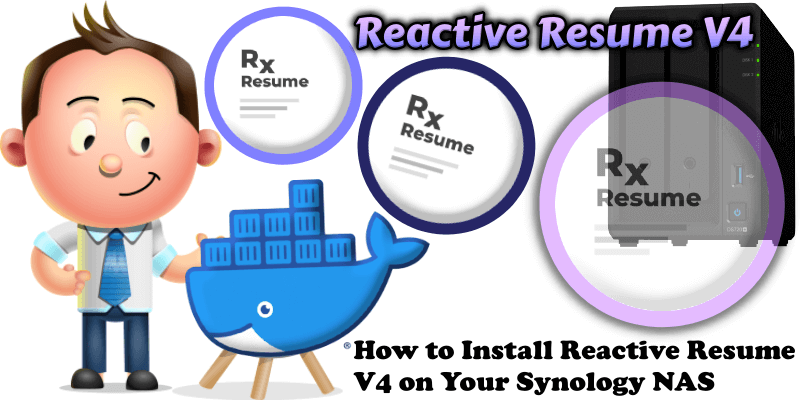
Do you remember my guides on how to install Reactive Resume V1 and Reactive Resume V3 on your Synology NAS? Today I want to show you how to install the new V4 version of Reactive Resume. Reactive Resume is a free and open source resume builder that’s built to make the mundane tasks of creating, updating and sharing your resume as easy as 1, 2, 3. With this app, you can create multiple resumes, share them with recruiters or friends through a unique link and print it as a PDF, all for free, no ads, no tracking, without losing the integrity and privacy of your data. In this step by step guide I will show you how to install Reactive Resume V4 on your Synology NAS using Docker and Portainer. Note: If you want a more lightweight Resume container, you can check my OpenResume guide.
This guide works perfectly with the latest Reactive Resume v4.5.4 release.
STEP 1
Please Support My work by Making a Donation.
STEP 2
Install Portainer using my step by step guide. If you already have Portainer installed on your Synology NAS, skip this STEP. Attention: Make sure you have installed the latest Portainer version.
STEP 3
Make sure you have a synology.me Wildcard Certificate. Follow my guide to get a Wildcard Certificate. If you already have a synology.me Wildcard certificate, skip this STEP.
STEP 4
Go to Control Panel / Login Portal / Advanced Tab / click Reverse Proxy. Follow the instructions in the image below.
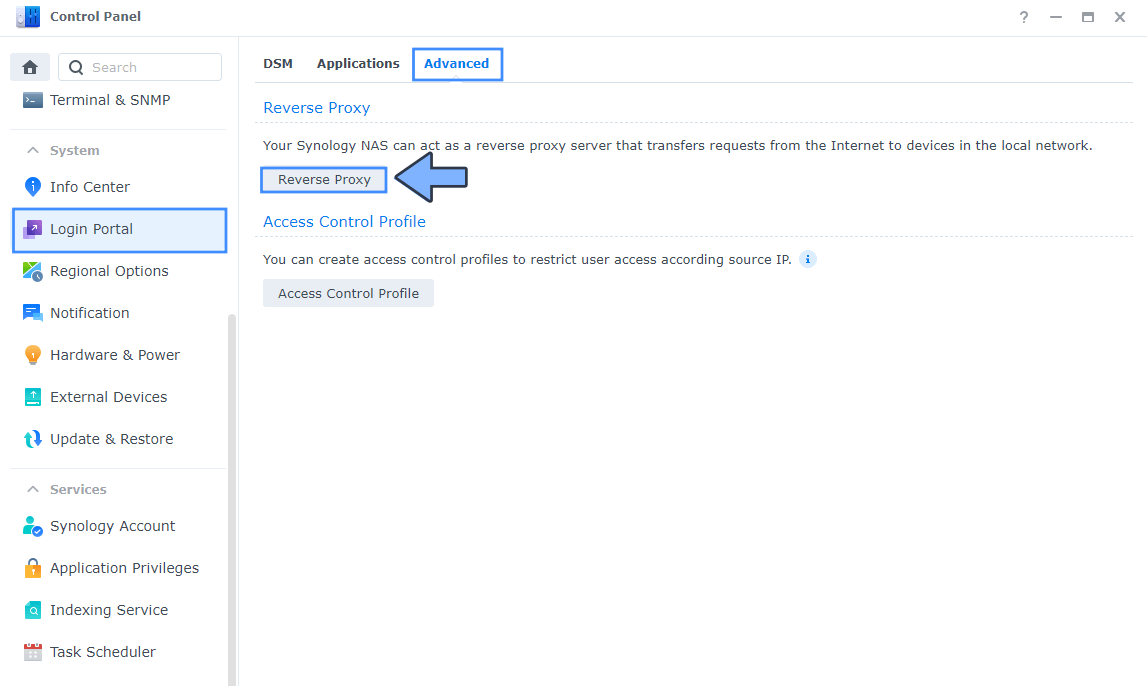
STEP 5
Now click the “Create” button. Follow the instructions in the image below.
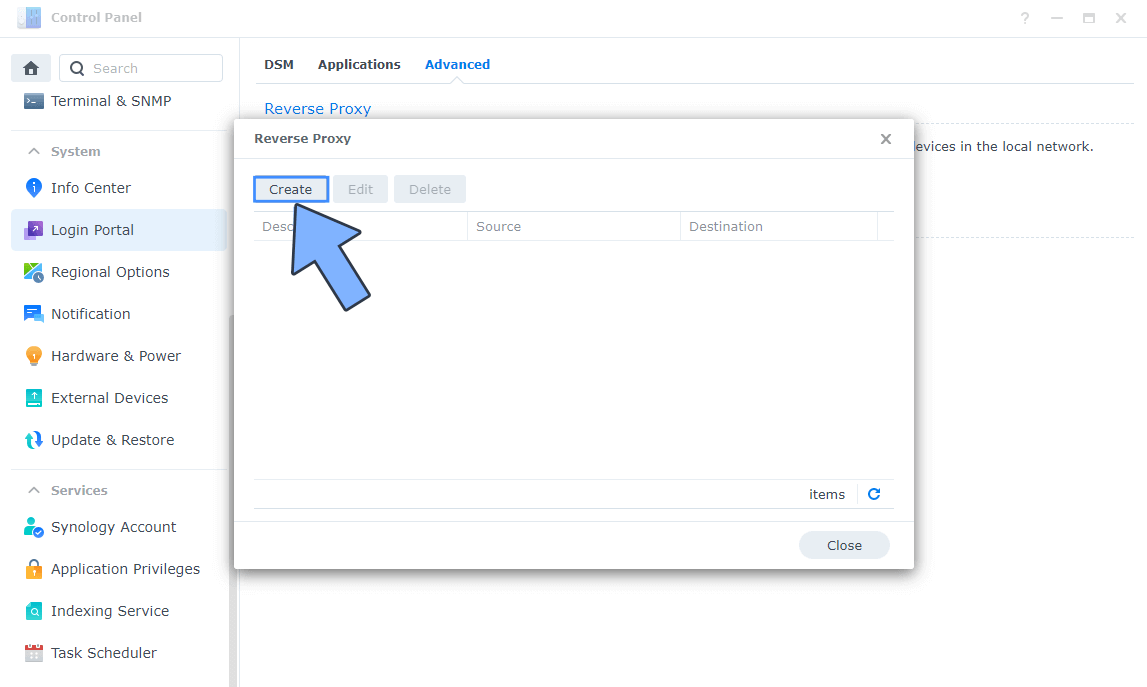
STEP 6
After you click the Create button, the window below will open. Follow the instructions in the image below.
On the General area, set the Reverse Proxy Name description: type in RXV4-ACCESS. After that, add the following instructions:
Source:
Protocol: HTTPS
Hostname: rxv4access.yourname.synology.me
Port: 443
Check Enable HSTS
Destination:
Protocol: HTTP
Hostname: localhost
Port: 9751
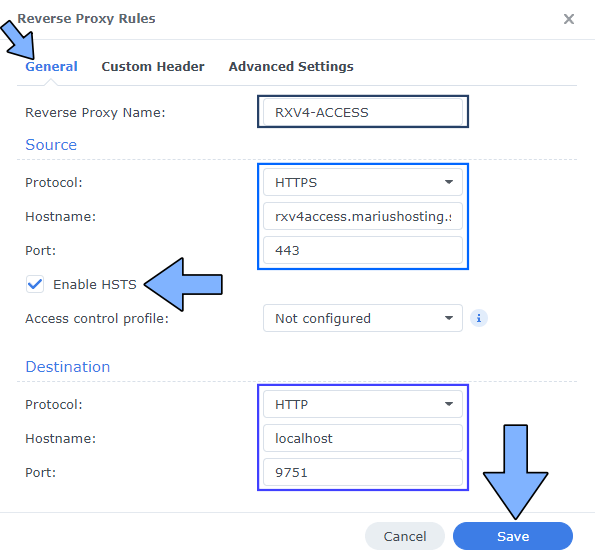
STEP 7
On the Reverse Proxy Rules, click the Custom Header tab. Click Create and then, from the drop-down menu, click WebSocket. After you click on WebSocket, two Header Names and two Values will be automatically added. Click Save. Follow the instructions in the image below.
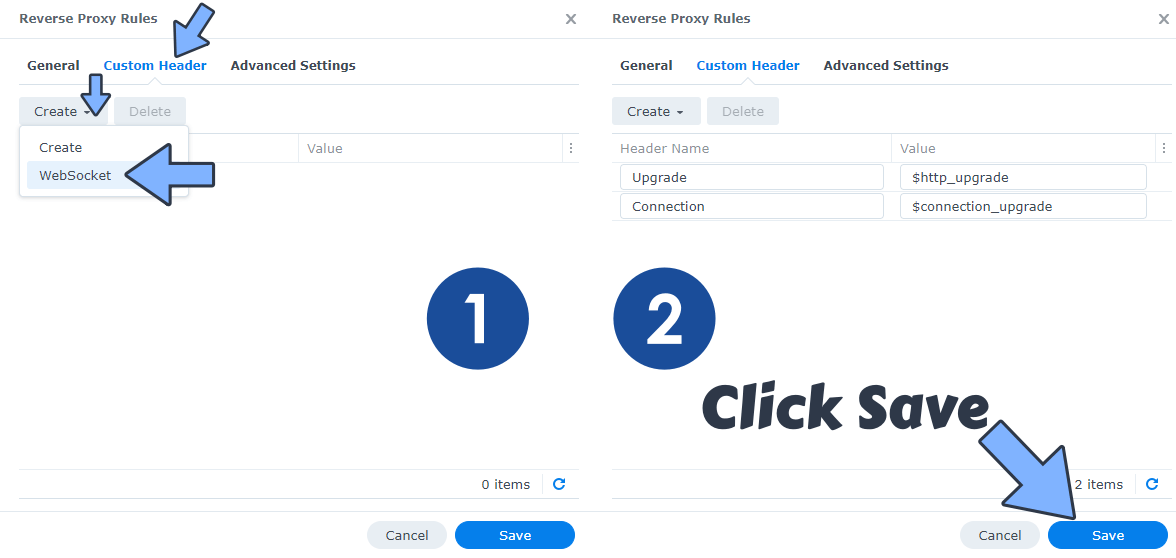
STEP 8
Go to Control Panel / Login Portal / Advanced Tab / click Reverse Proxy. Follow the instructions in the image below.
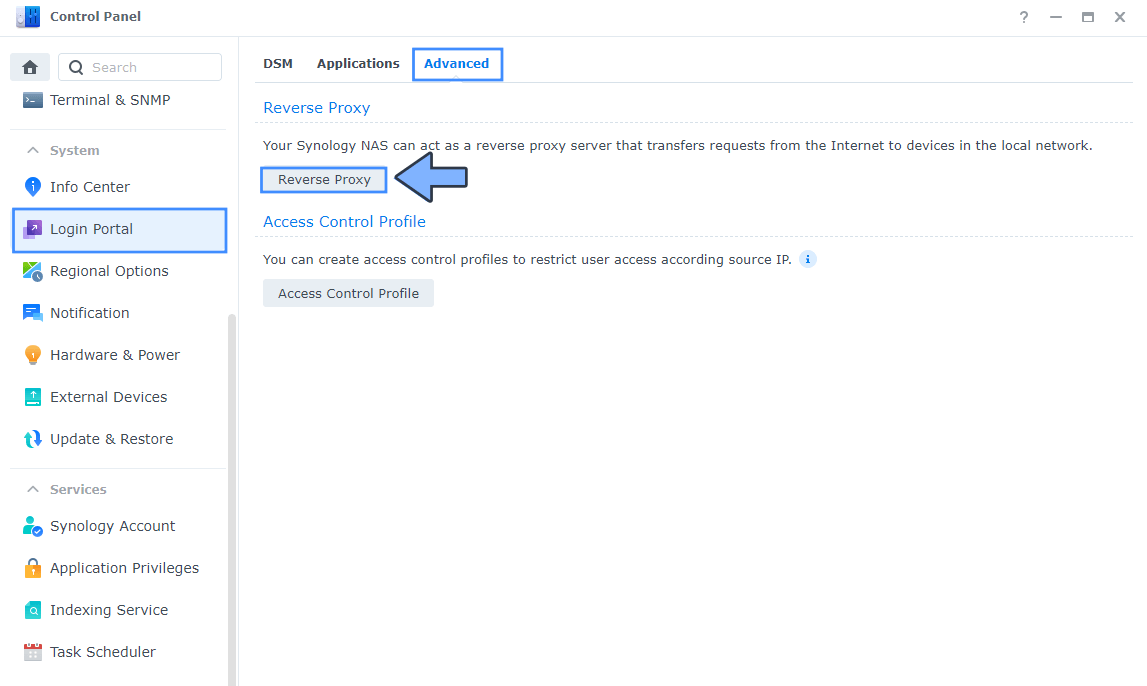
STEP 9
Now click the “Create” button. Follow the instructions in the image below.
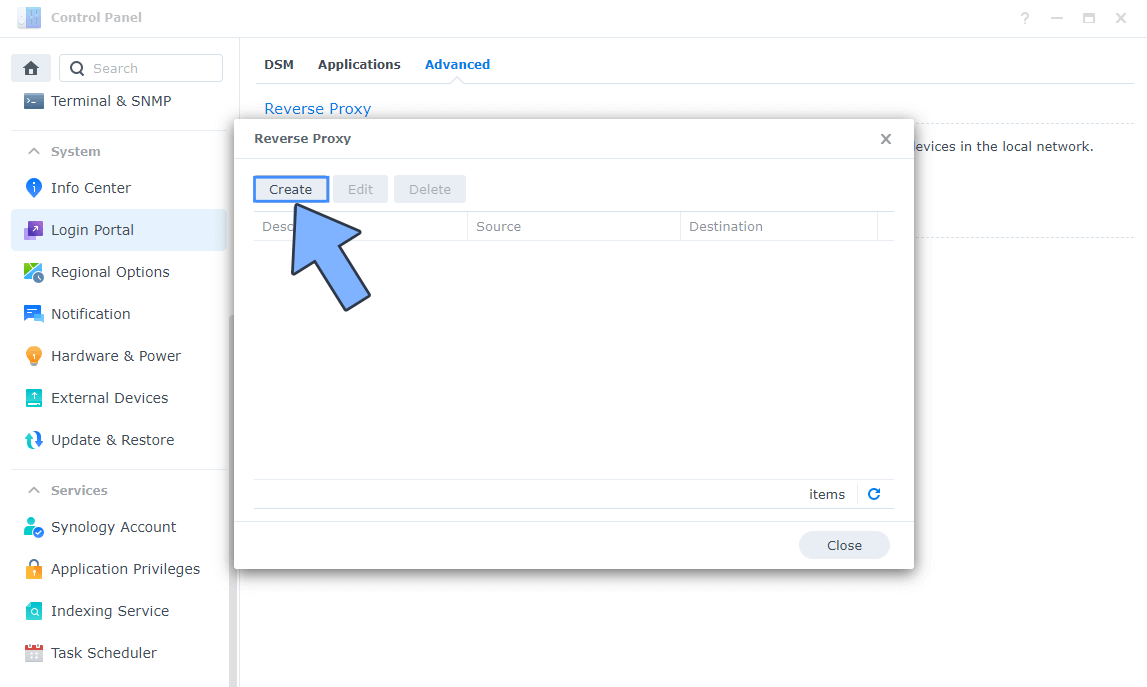
STEP 10
After you click the Create button, the window below will open. Follow the instructions in the image below.
On the General area, set the Reverse Proxy Name description: type in RVX4-DOWNLOAD. After that, add the following instructions:
Source:
Protocol: HTTPS
Hostname: rxv4download.yourname.synology.me
Port: 443
Check Enable HSTS
Destination:
Protocol: HTTP
Hostname: localhost
Port: 9753
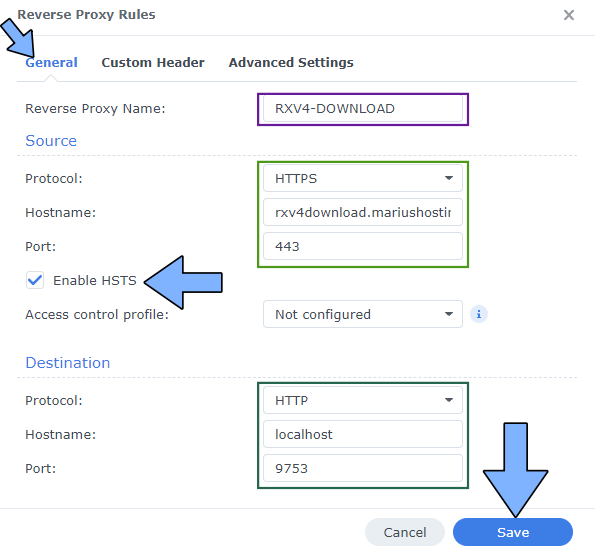
STEP 11
On the Reverse Proxy Rules, click the Custom Header tab. Click Create and then, from the drop-down menu, click WebSocket. After you click on WebSocket, two Header Names and two Values will be automatically added. Click Save. Follow the instructions in the image below.

STEP 12
Go to Control Panel / Network / Connectivity tab/ Check Enable HTTP/2 then click Apply. Follow the instructions in the image below.
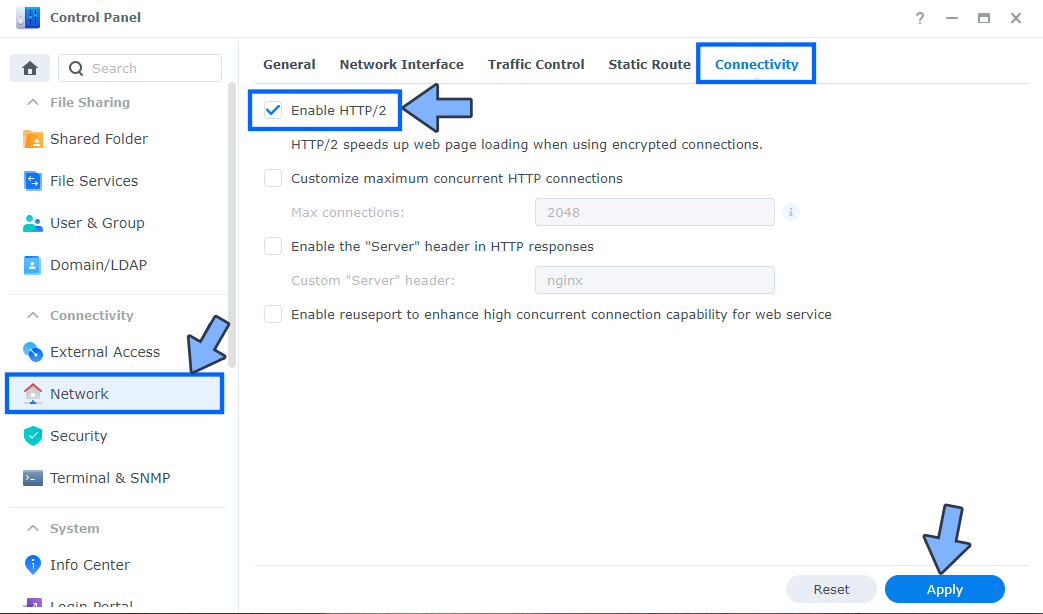
STEP 13
Go to Control Panel / Security / Advanced tab/ Check Enable HTTP Compression then click Apply. Follow the instructions in the image below.

STEP 14
Go to File Station and open the docker folder. Inside the docker folder, create one new folder and name it rxv4. Follow the instructions in the image below.
Note: Be careful to enter only lowercase, not uppercase letters.
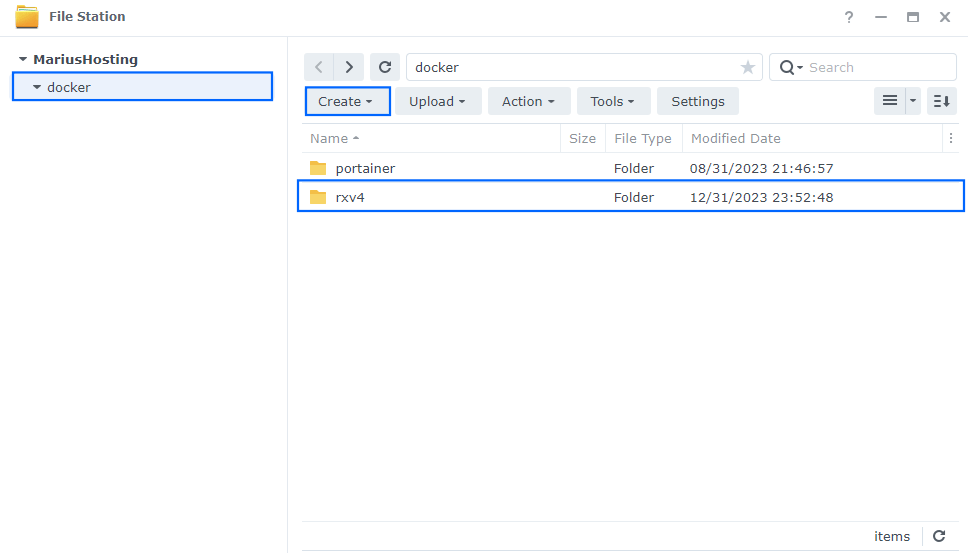
STEP 15
Now create two new folders inside the rxv4 folder that you created at STEP 14 and name them data and db. Follow the instructions in the image below.
Note: Be careful to enter only lowercase, not uppercase letters.
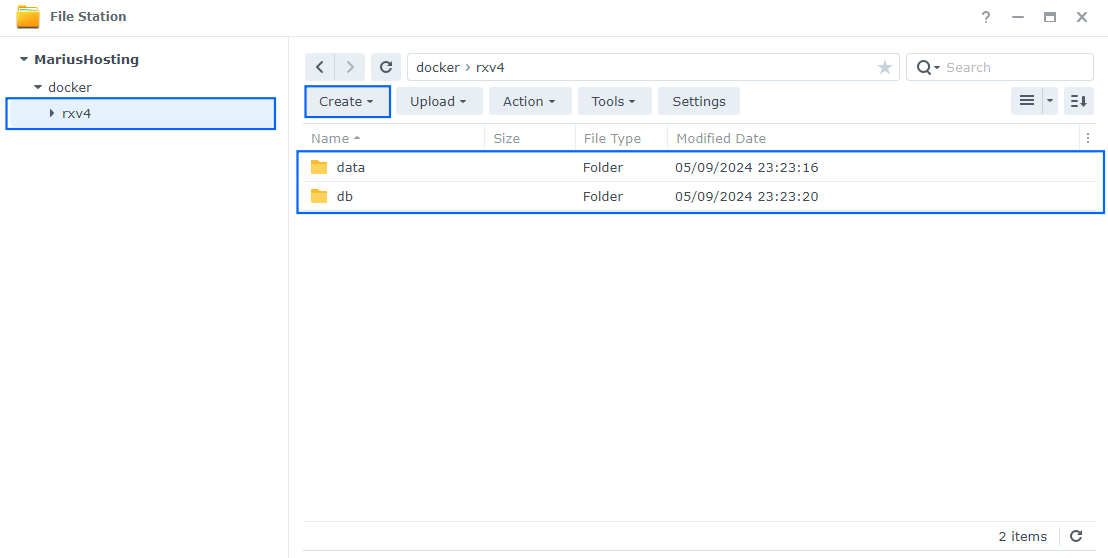
STEP 16
Follow my step by step guide on how to activate SMTP for your Gmail account. This step is mandatory. Note: If you don’t want to use the easiest way for SMTP with Google and you already have SMTP details from your own Mail Server, you can just skip this STEP and use your personalized email SMTP details instead.
STEP 17
Log into Portainer using your username and password. On the left sidebar in Portainer, click on Home then Live connect. Follow the instructions in the image below.
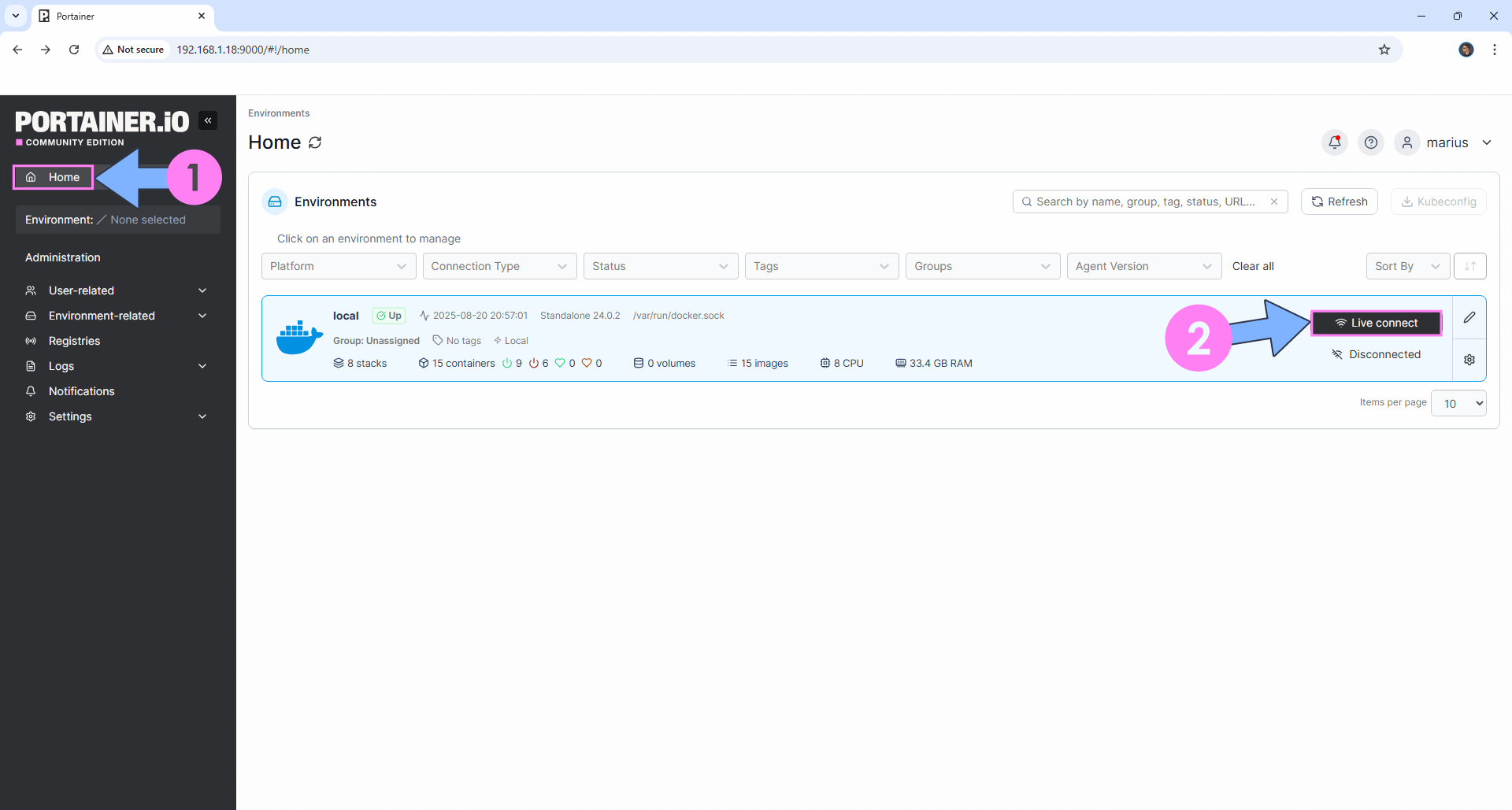
On the left sidebar in Portainer, click on Stacks then + Add stack. Follow the instructions in the image below.
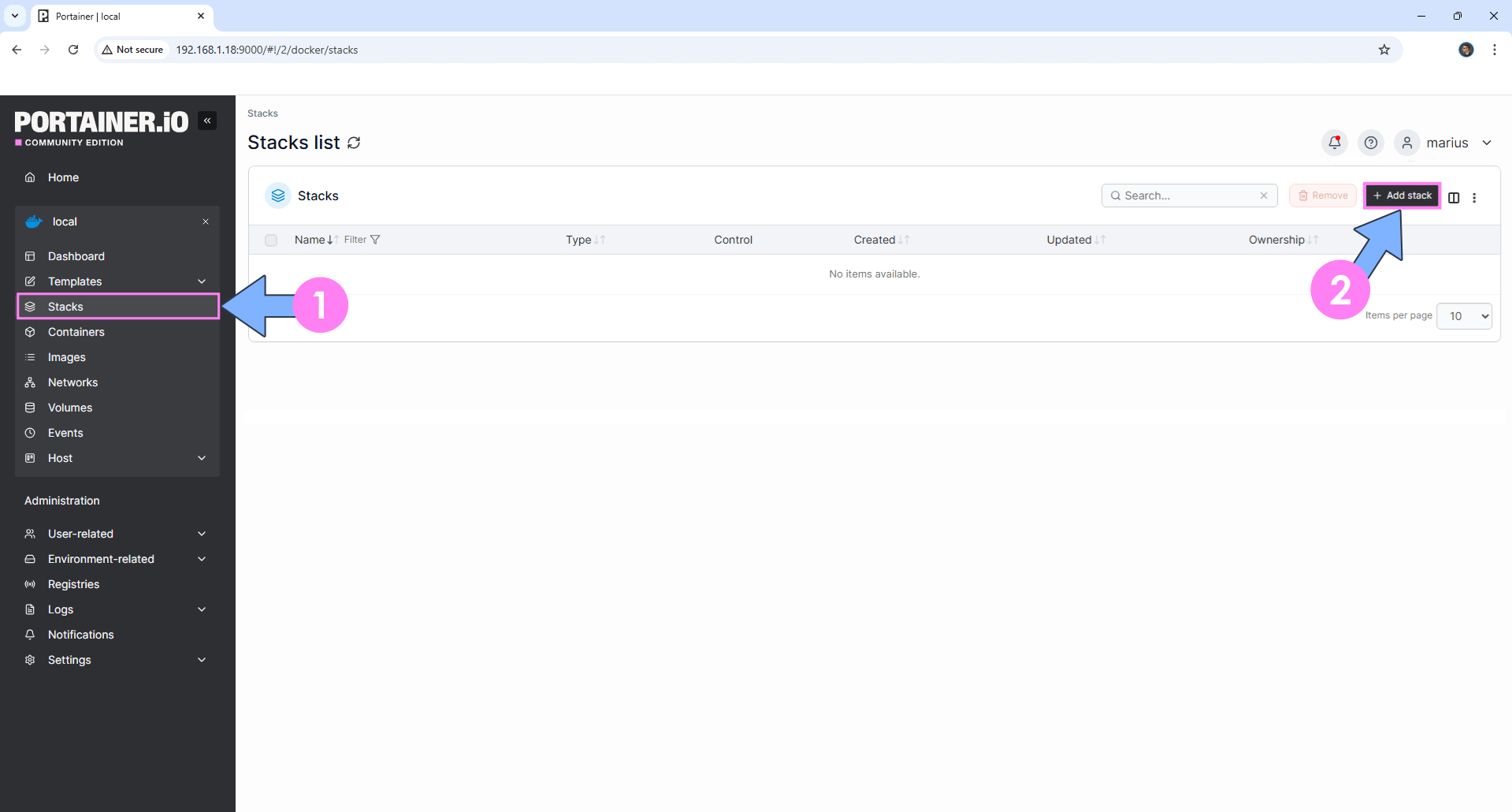
STEP 18
In the Name field type in rxv4. Follow the instructions in the image below.
services:
db:
image: postgres:18
container_name: Resume-DB
hostname: resume-db
security_opt:
- no-new-privileges:true
healthcheck:
test: ["CMD", "pg_isready", "-q", "-d", "resume", "-U", "resumeuser"]
timeout: 45s
interval: 10s
retries: 10
volumes:
- /volume1/docker/rxv4/db:/var/lib/postgresql:rw
environment:
POSTGRES_DB: resume
POSTGRES_USER: resumeuser
POSTGRES_PASSWORD: resumepass
restart: on-failure:5
minio:
image: minio/minio:latest
command: server /data
container_name: Resume-MINIO
hostname: resume-minio
security_opt:
- no-new-privileges:true
user: 1026:100
healthcheck:
test: ["CMD", "mc", "ready", "local"]
interval: 5s
timeout: 5s
retries: 5
ports:
- 9753:9000
volumes:
- /volume1/docker/rxv4/data:/data:rw
environment:
MINIO_ROOT_USER: minioadmin
MINIO_ROOT_PASSWORD: miniopass
restart: on-failure:5
chrome:
image: browserless/chrome:1-puppeteer-16.2.0
container_name: Resume-CHROME
hostname: chrome
user: 1026:100
environment:
TOKEN: chrome_token
EXIT_ON_HEALTH_FAILURE: false
PRE_REQUEST_HEALTH_CHECK: false
restart: on-failure:5
resume:
image: amruthpillai/reactive-resume:latest
container_name: Resume-ACCESS
hostname: resume
restart: on-failure:5
security_opt:
- no-new-privileges:true
ports:
- 9751:3000
environment:
PORT: 3000
NODE_ENV: production
ACCESS_TOKEN_SECRET: access_token_secret
REFRESH_TOKEN_SECRET: refresh_token_secret
PUBLIC_URL: https://rxv4access.yourname.synology.me # resume address STEP 6
STORAGE_URL: https://rxv4download.yourname.synology.me/default/ # minio address STEP 10
CHROME_TOKEN: chrome_token
CHROME_URL: ws://chrome:3000
DATABASE_URL: postgresql://resumeuser:resumepass@resume-db:5432/resume
STORAGE_ENDPOINT: minio
STORAGE_PORT: 9000
STORAGE_REGION: us-east-1
STORAGE_BUCKET: default
STORAGE_ACCESS_KEY: minioadmin
STORAGE_SECRET_KEY: miniopass
STORAGE_USE_SSL: false
DISABLE_SIGNUPS: false
MAIL_FROM: noreply@localhost
SMTP_URL: smtp://yourownGmailaddress:appassword@smtp.gmail.com:587
DISABLE_EMAIL_AUTH: false
VITE_DISABLE_SIGNUPS: false
depends_on:
db:
condition: service_healthy
minio:
condition: service_healthy
chrome:
condition: service_started
Note: Before you paste the code above in the Web editor area below, change the value numbers for user with your own UID and GID values. (Follow my step by step guide on how to do this.) 1026 is my personal UID value and 100 is my personal GID value. You have to type in your own values.
Note: Before you paste the code above in the Web editor area below, change the value for PUBLIC_URL and type in your own synology.me DDNS that you have previously created at STEP 6.
Note: Before you paste the code above in the Web editor area below, change the value for STORAGE_URL and type in your own synology.me DDNS that you have previously created at STEP 10 followed by /default/.
Note: On the SMTP_URL area, type in your own Gmail address. STEP 16.
Note: On the SMTP_URL area, type in your own Gmail App Password. STEP 16.

STEP 19
Scroll down on the page until you see a button named Deploy the stack. Click on it. Follow the instructions in the image below. The installation process can take up to a few minutes. It will depend on your Internet speed connection.
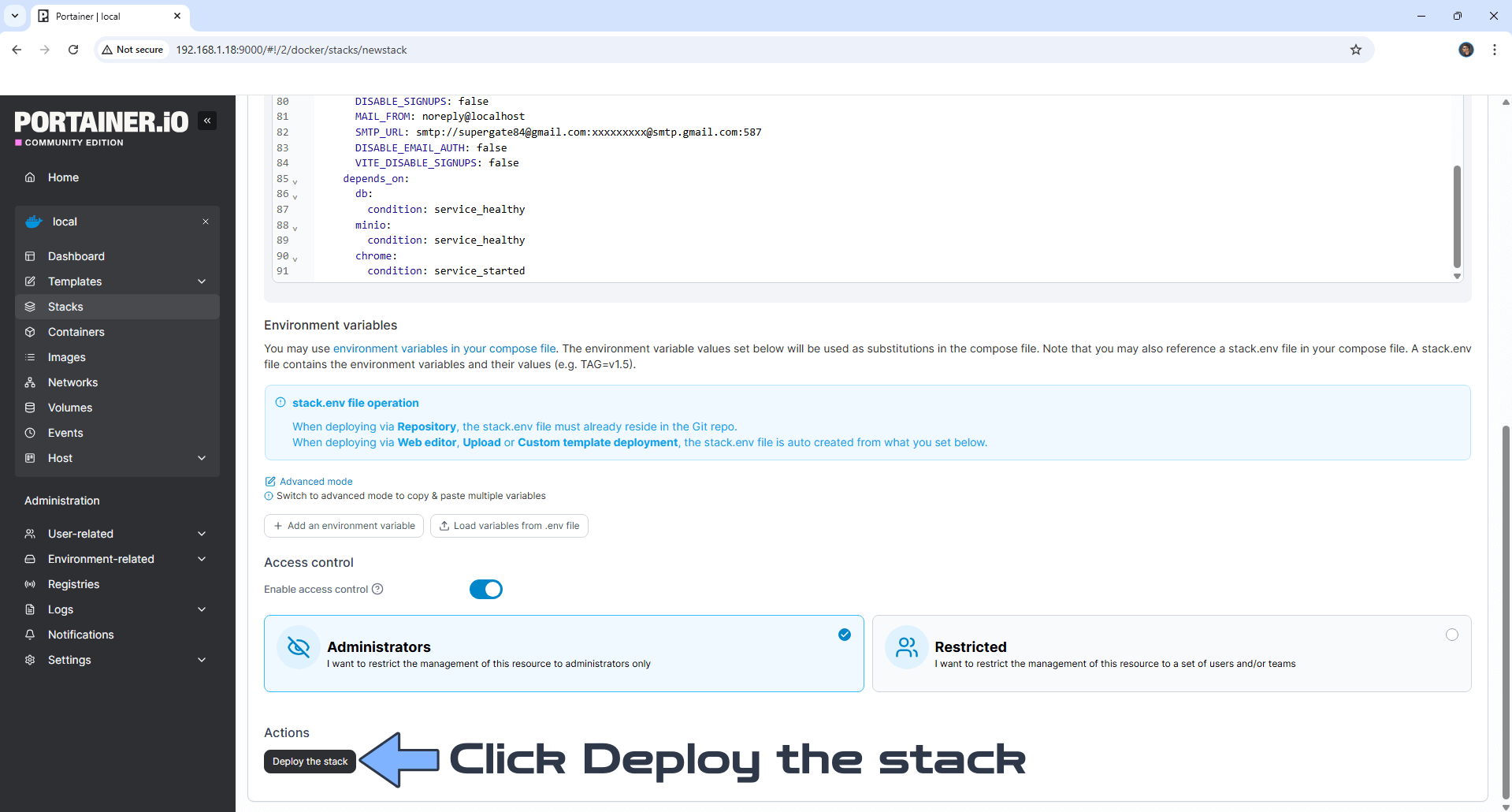
STEP 20
If everything goes right, you will see the following message at the top right of your screen: “Success Stack successfully deployed“.
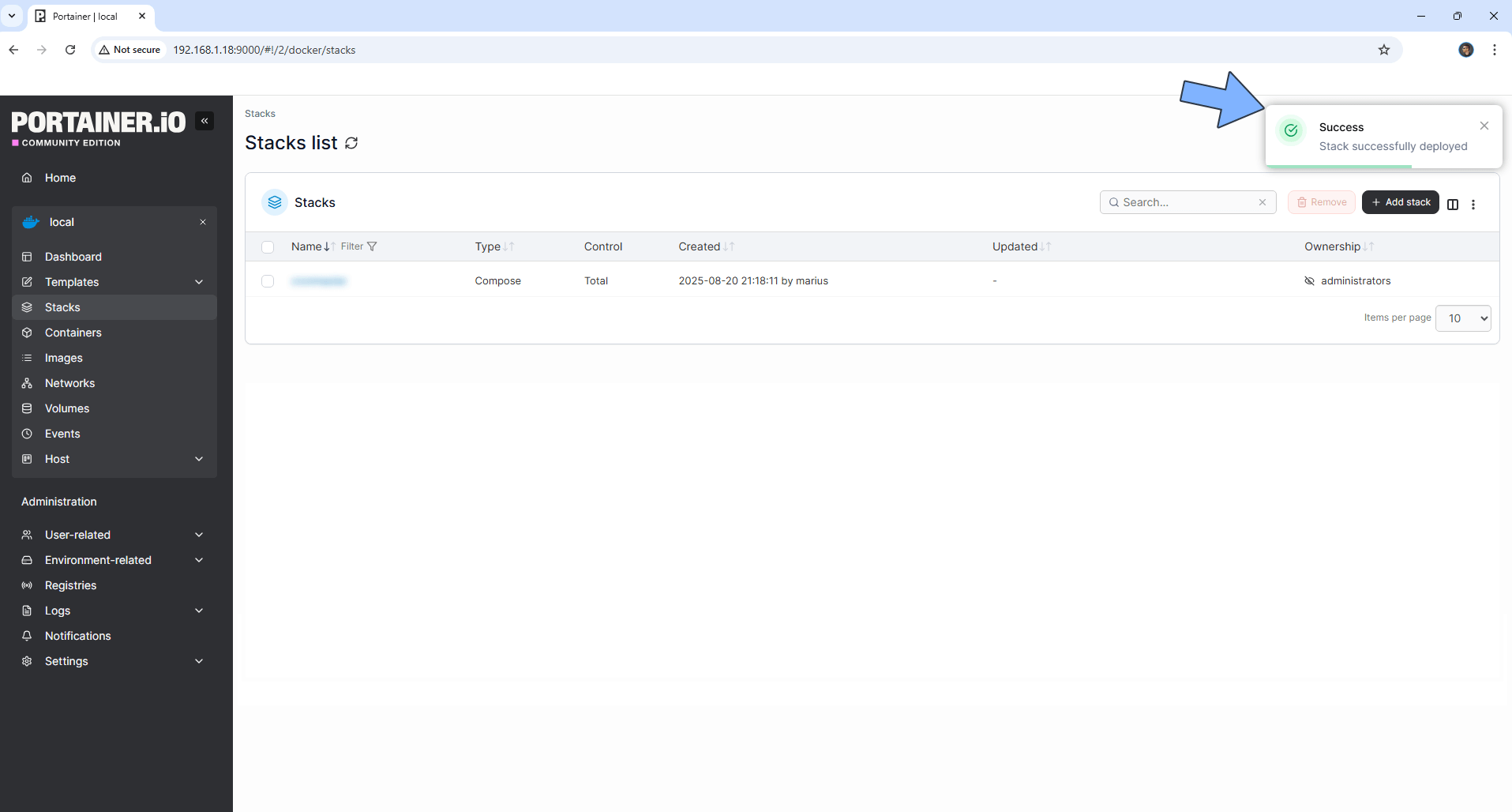
STEP 21
🟢Please Support My work by Making a Donation. Almost 99,9% of the people that install something using my guides forget to support my work, or just ignore STEP 1. I’ve been very honest about this aspect of my work since the beginning: I don’t run any ADS, I don’t require subscriptions, paid or otherwise, I don’t collect IPs, emails, and I don’t have any referral links from Amazon or other merchants. I also don’t have any POP-UPs or COOKIES. I have repeatedly been told over the years how much I have contributed to the community. It’s something I love doing and have been honest about my passion since the beginning. But I also Need The Community to Support me Back to be able to continue doing this work.
STEP 22
Now open your browser and type in your HTTPS/SSL certificate like this https://rxv4access.yourname.synology.me that you have previously created at STEP 10. In my case it’s https://rxv4access.mariushosting.synology.me If everything goes right, you will see the Reactive Resume V4 main page. Click Get Started. Follow the instructions in the image below.
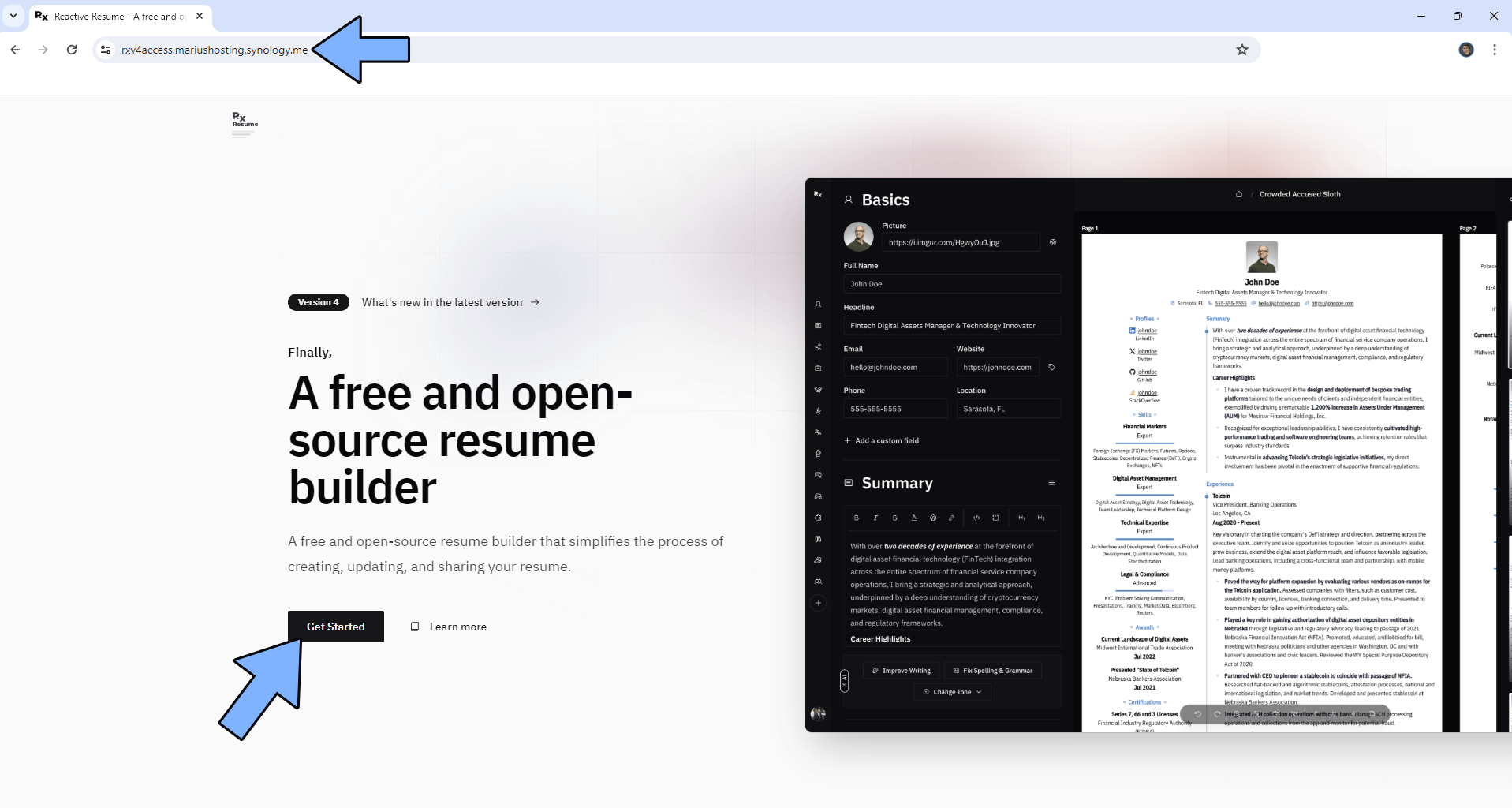
STEP 23
Change the theme to Dark Mode, then click Create one now to create a new account. Follow the instructions in the image below.
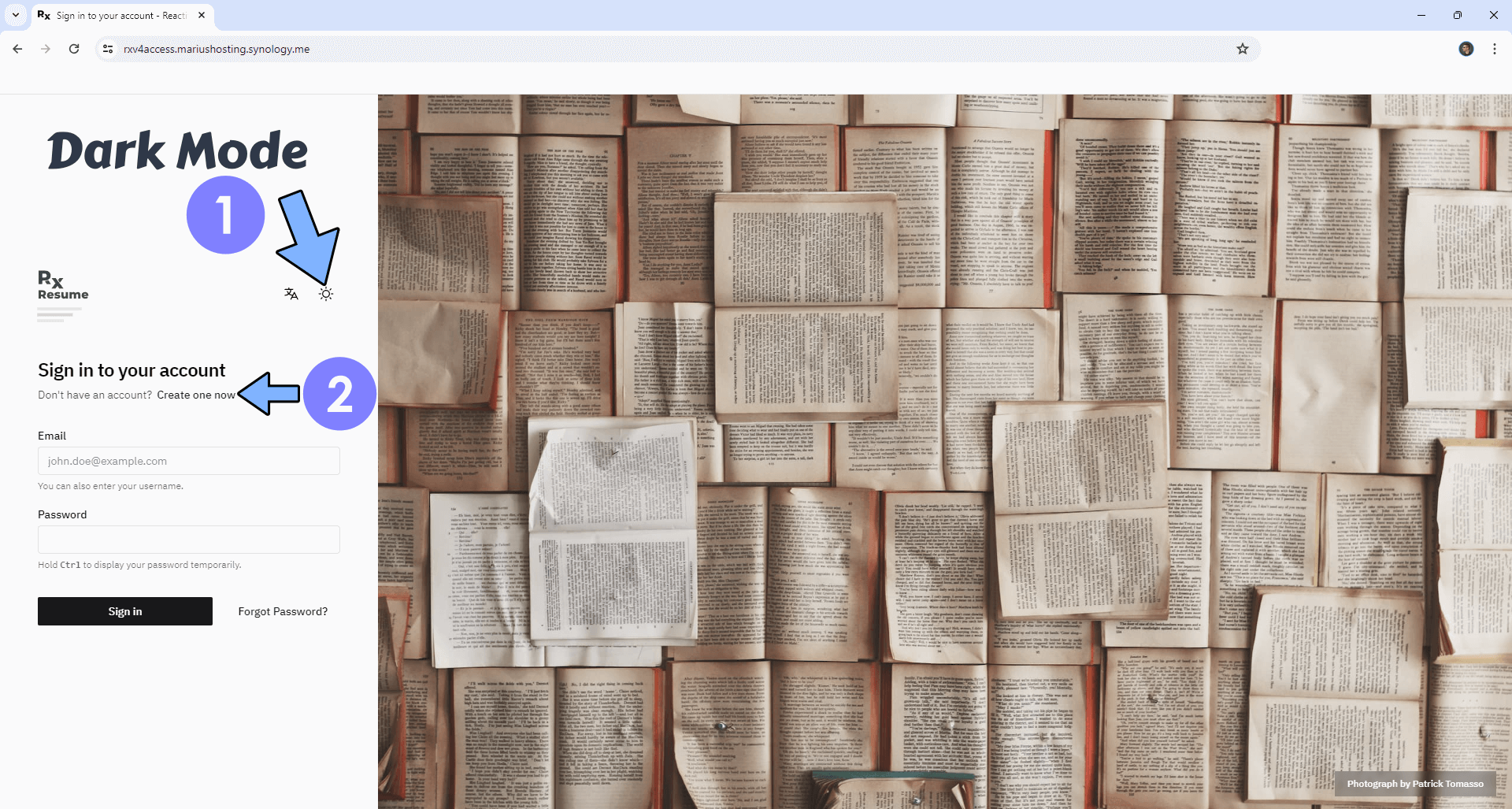
STEP 24
Add your own credentials then click Sign up. Follow the instructions in the image below.
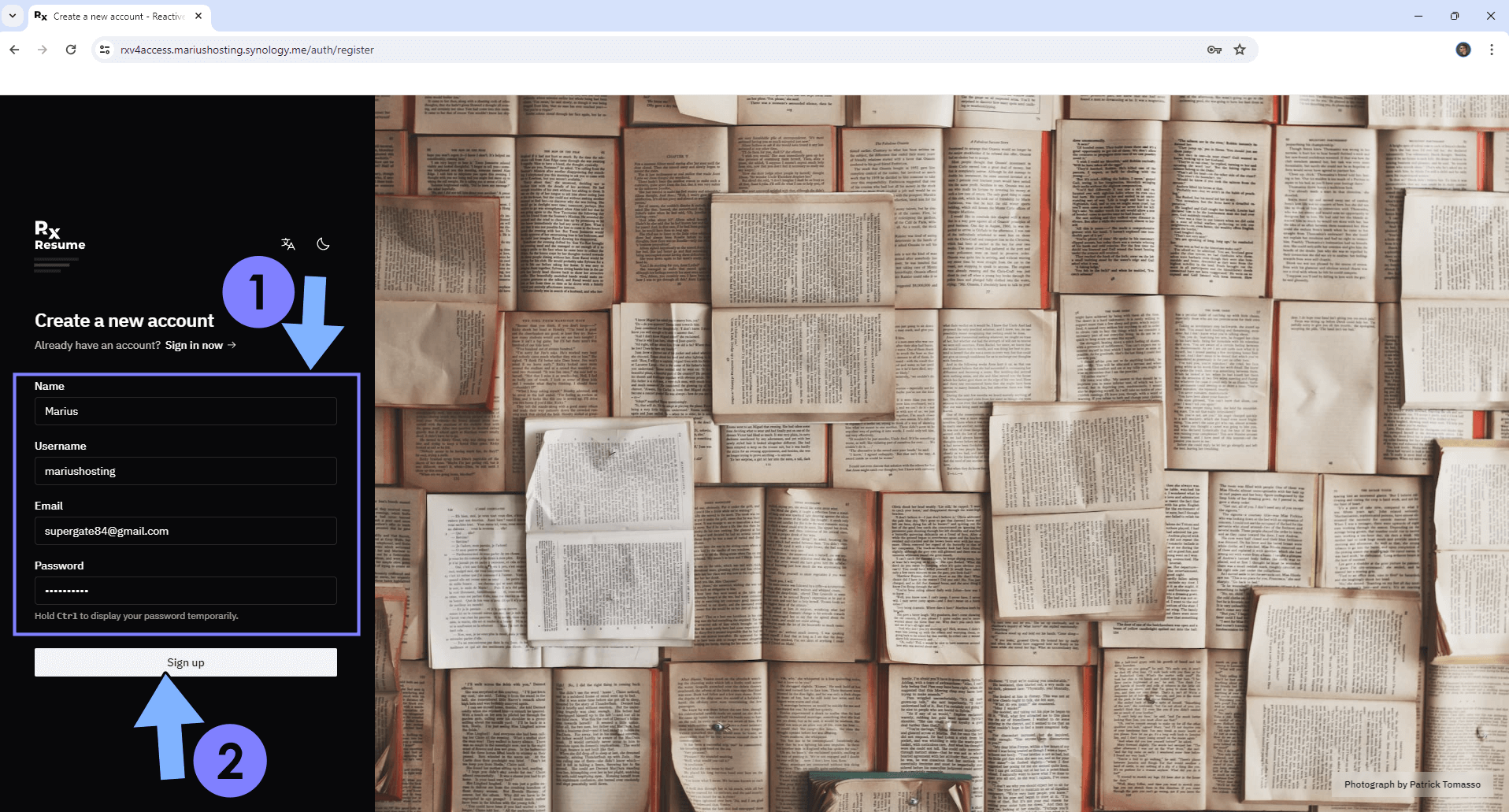
STEP 25
Check your email then click the link to verify your email address. Follow the instructions in the image below.

STEP 26
If everything goes right, you will see a message that says that your email has been verified. Click Create a new resume. Follow the instructions in the image below.
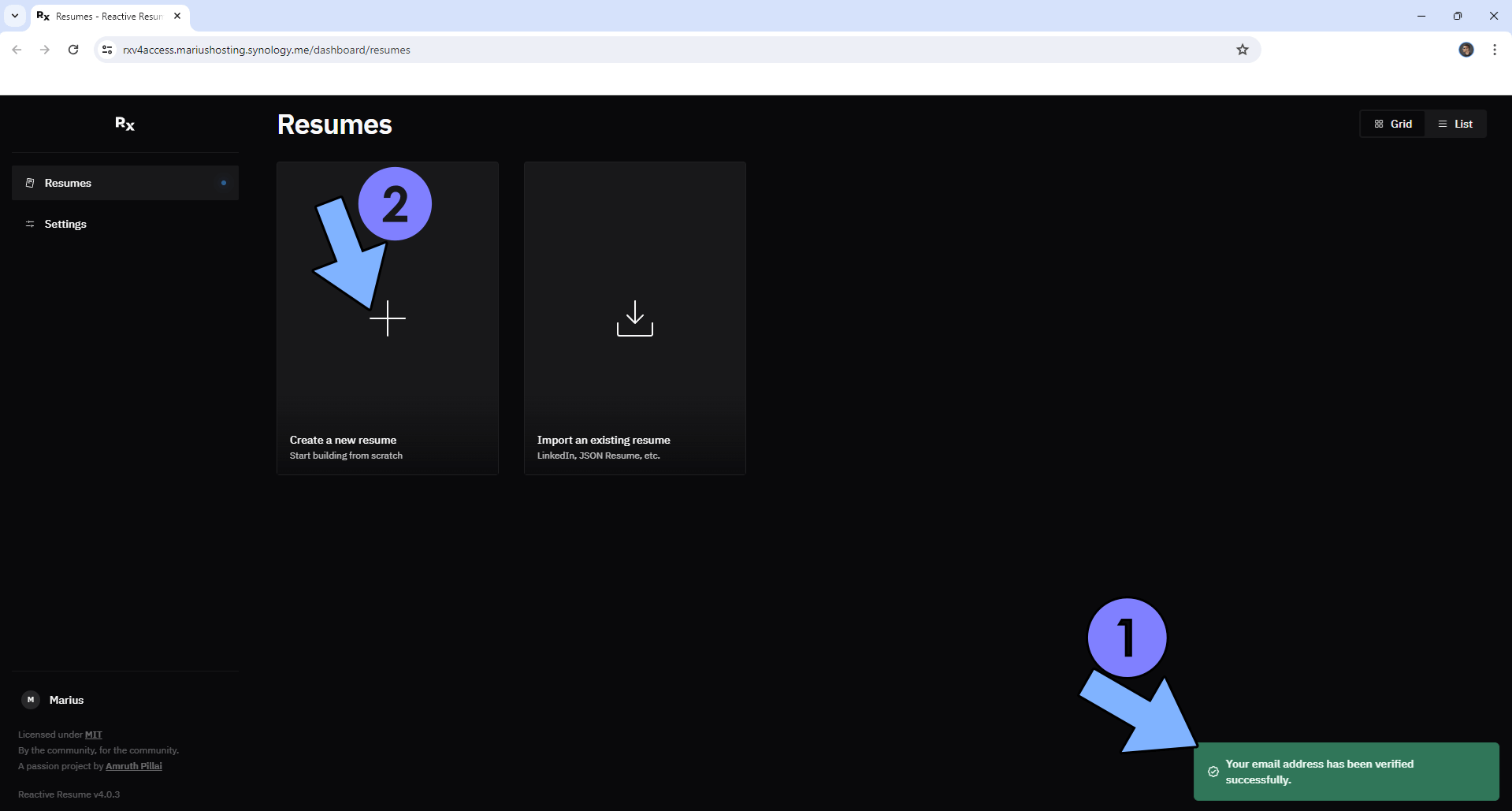
STEP 27
Give a Title and a Slug to your Resume, then click Create. Follow the instructions in the image below.
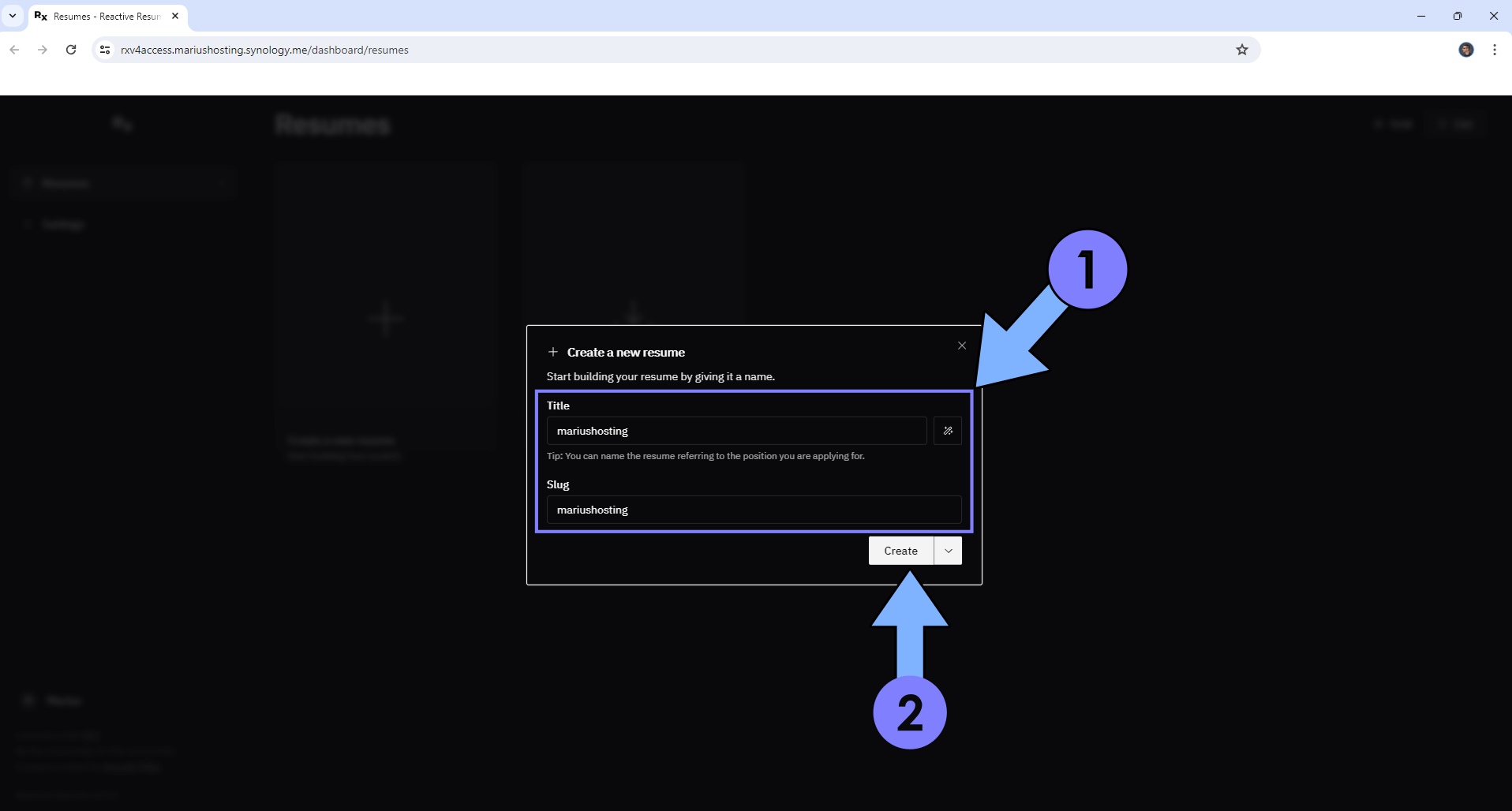
STEP 28
Click to open your Resume. Follow the instructions in the image below.
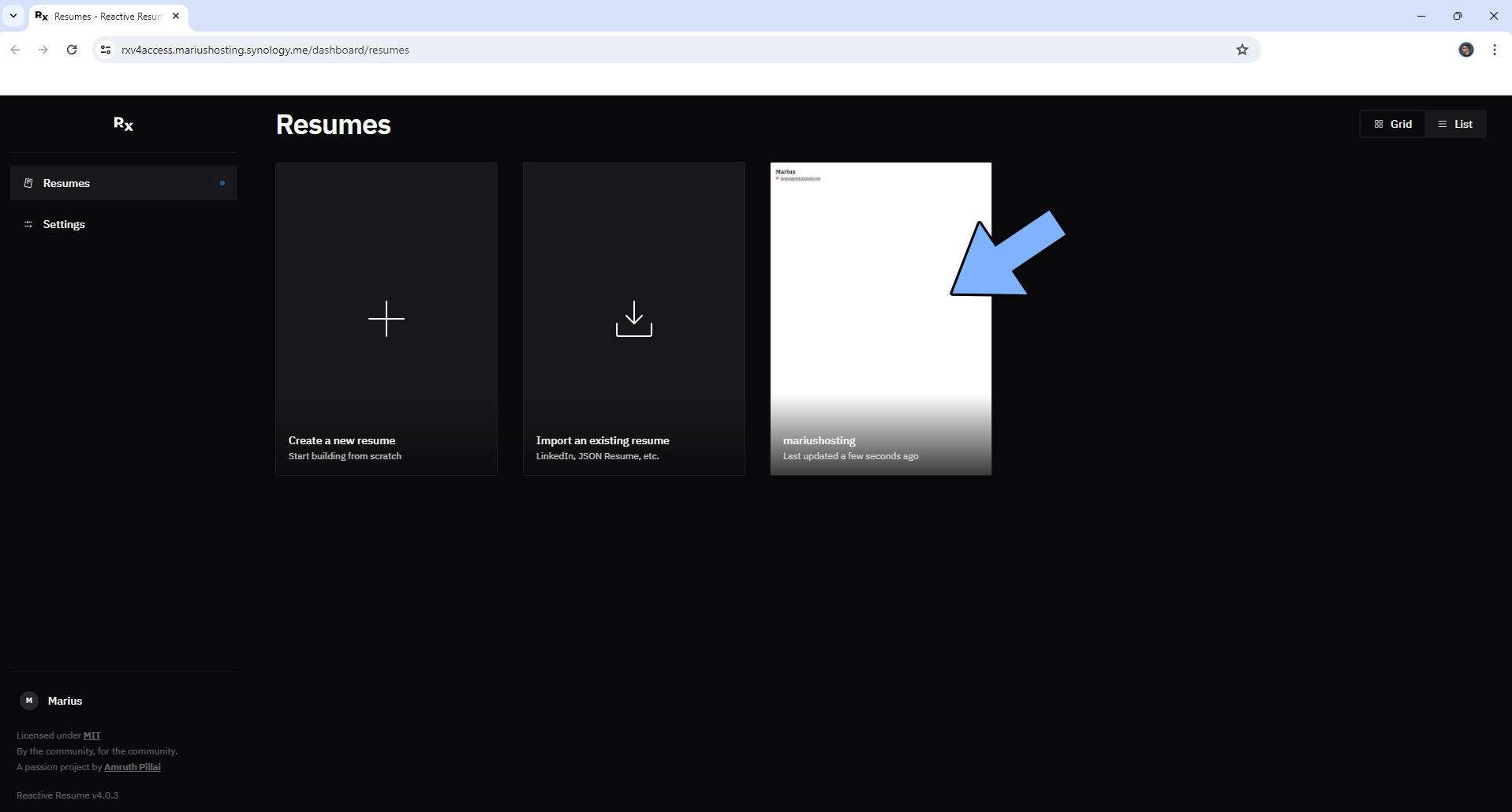
STEP 29
After you have completed your Resume, you can download it. Click the little download icon on the right, then PDF to download it in a PDF format. Follow the instructions in the image below.
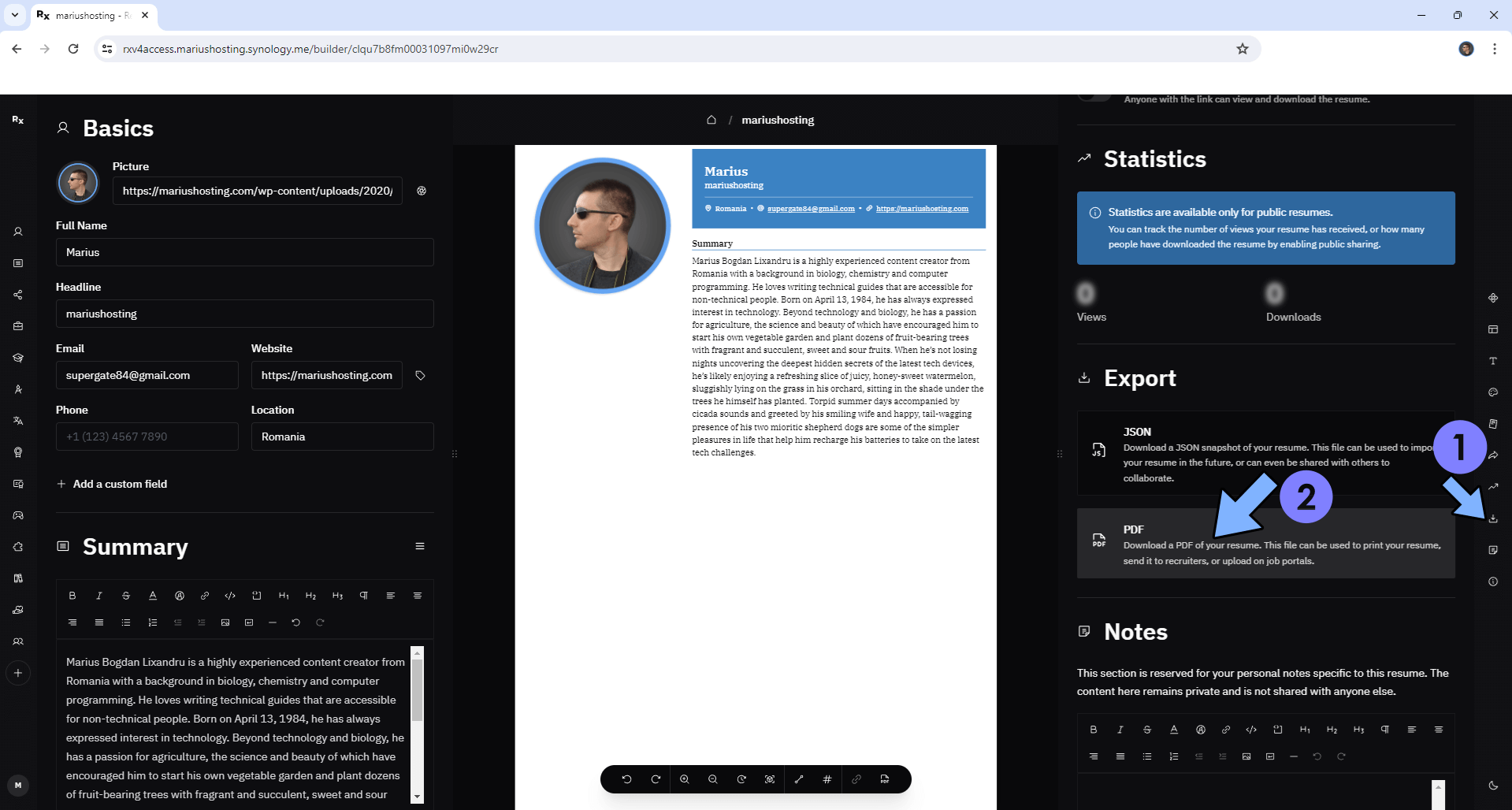
STEP 30
Chrome browser will automatically block your pop-ups. In the browser, click on the Pop-ups icon, then check Always allow pop-ups and redirects from your synology.me DDNS address, then click Done. Follow the instructions in the image below.
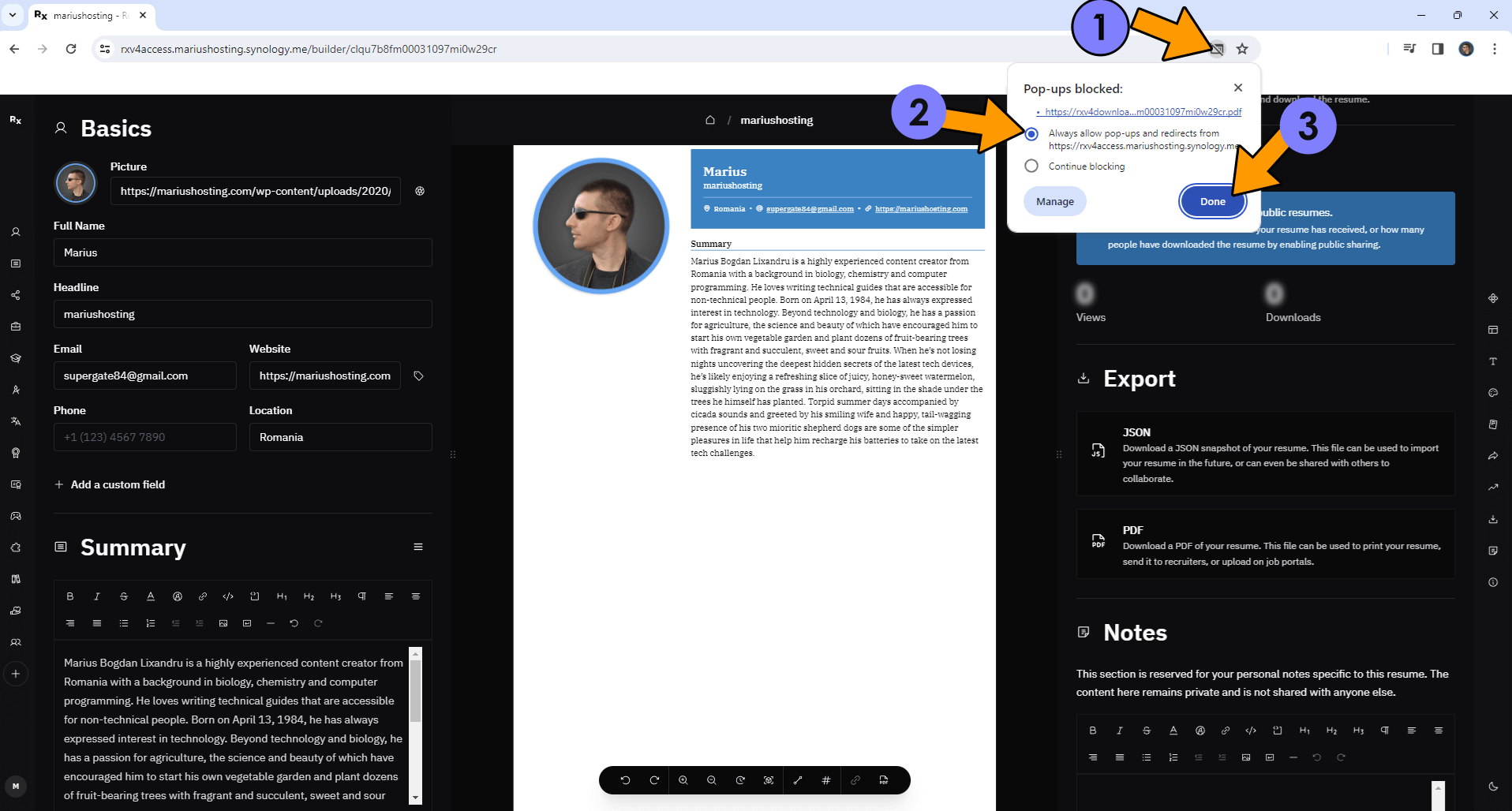
STEP 31
At this point, if you click PDF again, you should be able to download your Resume file without any issues. Follow the instructions in the image below.
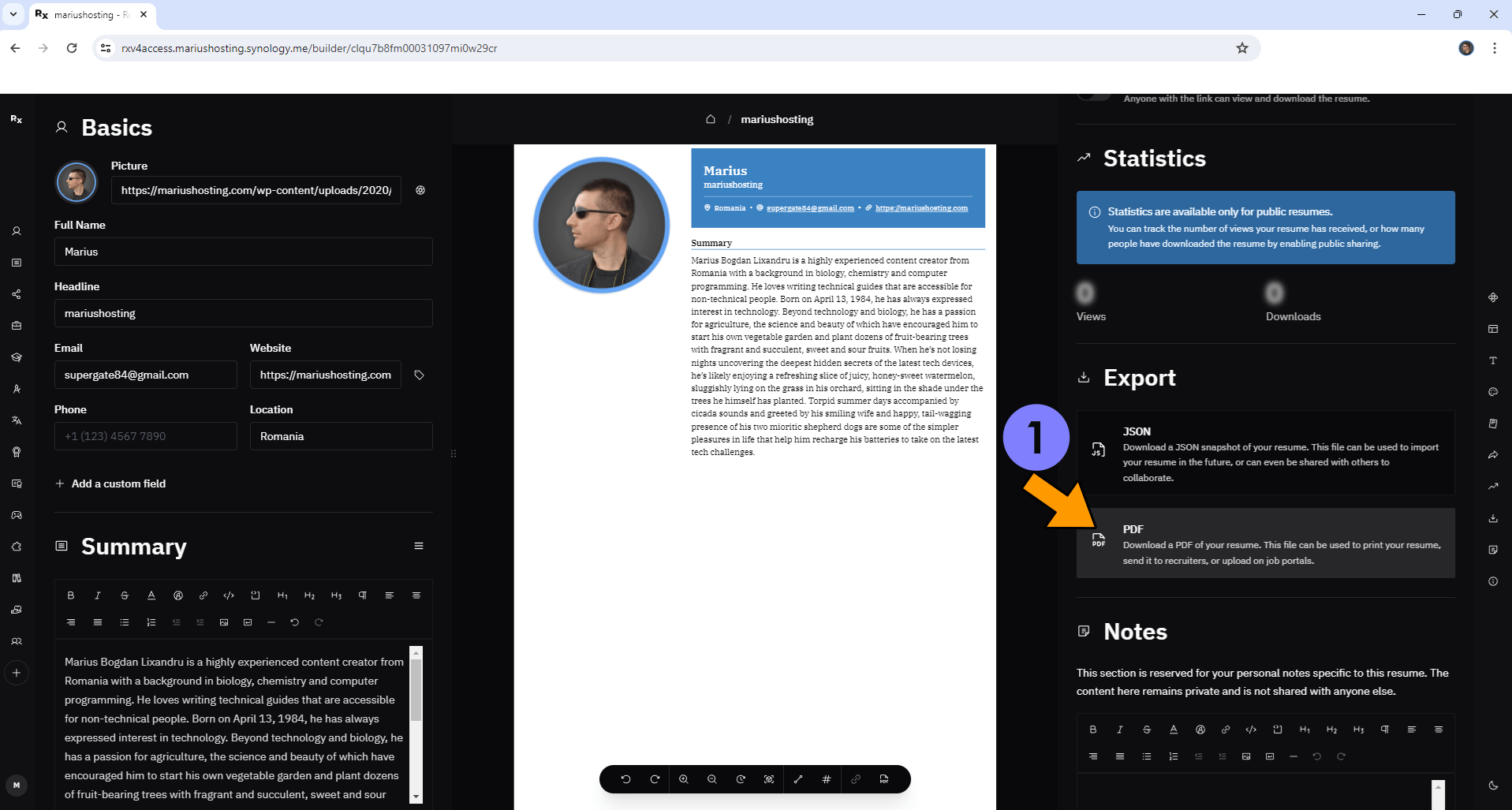
STEP 32
With Reactive Resume V4 you have so many layouts and colors available to create a stunning Resume.
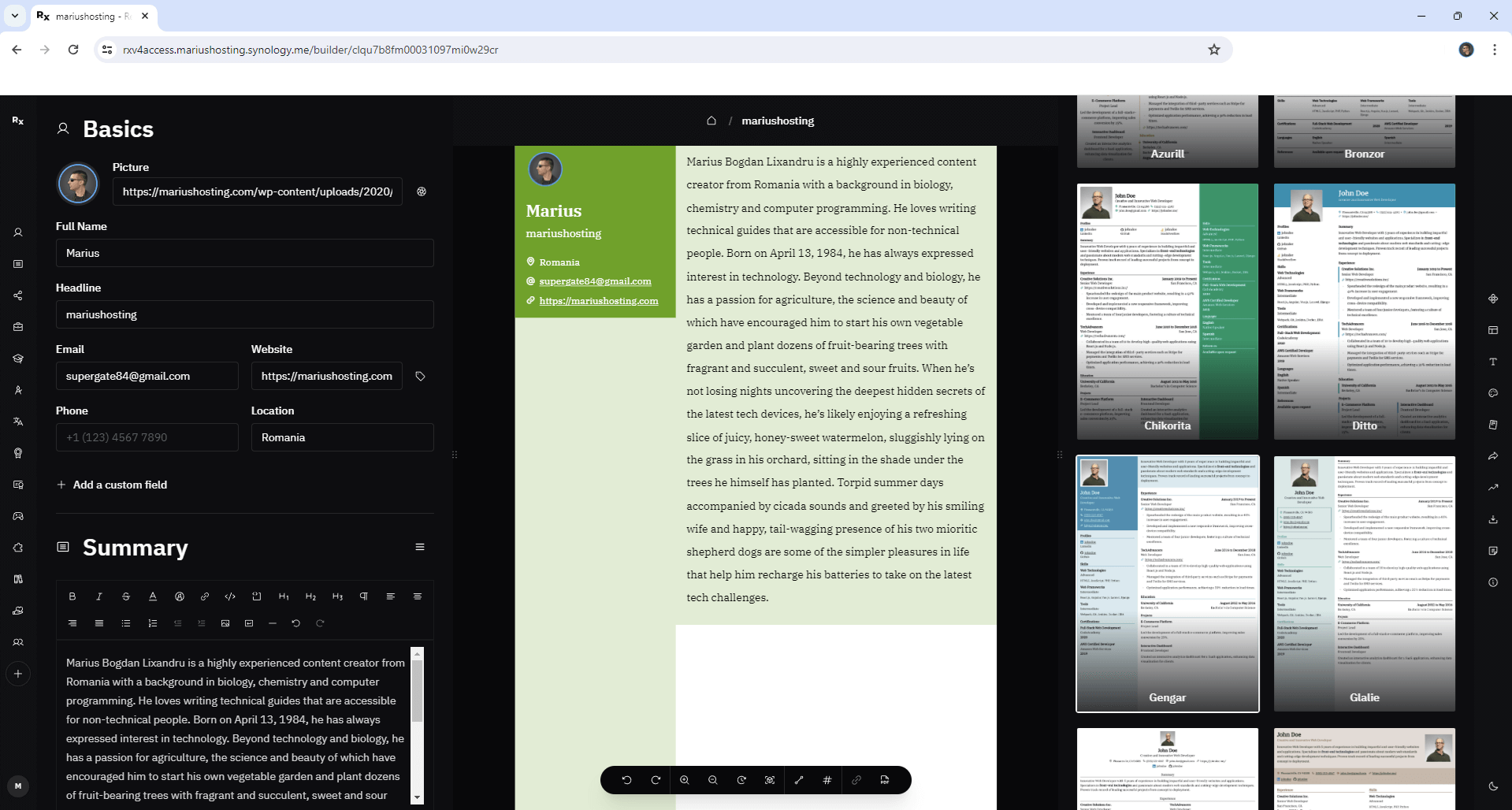
STEP 33
You can easily share your Resume. On the right sidebar, click on the share icon, then turn on “Public” and copy the link. Follow the instructions in the image below.
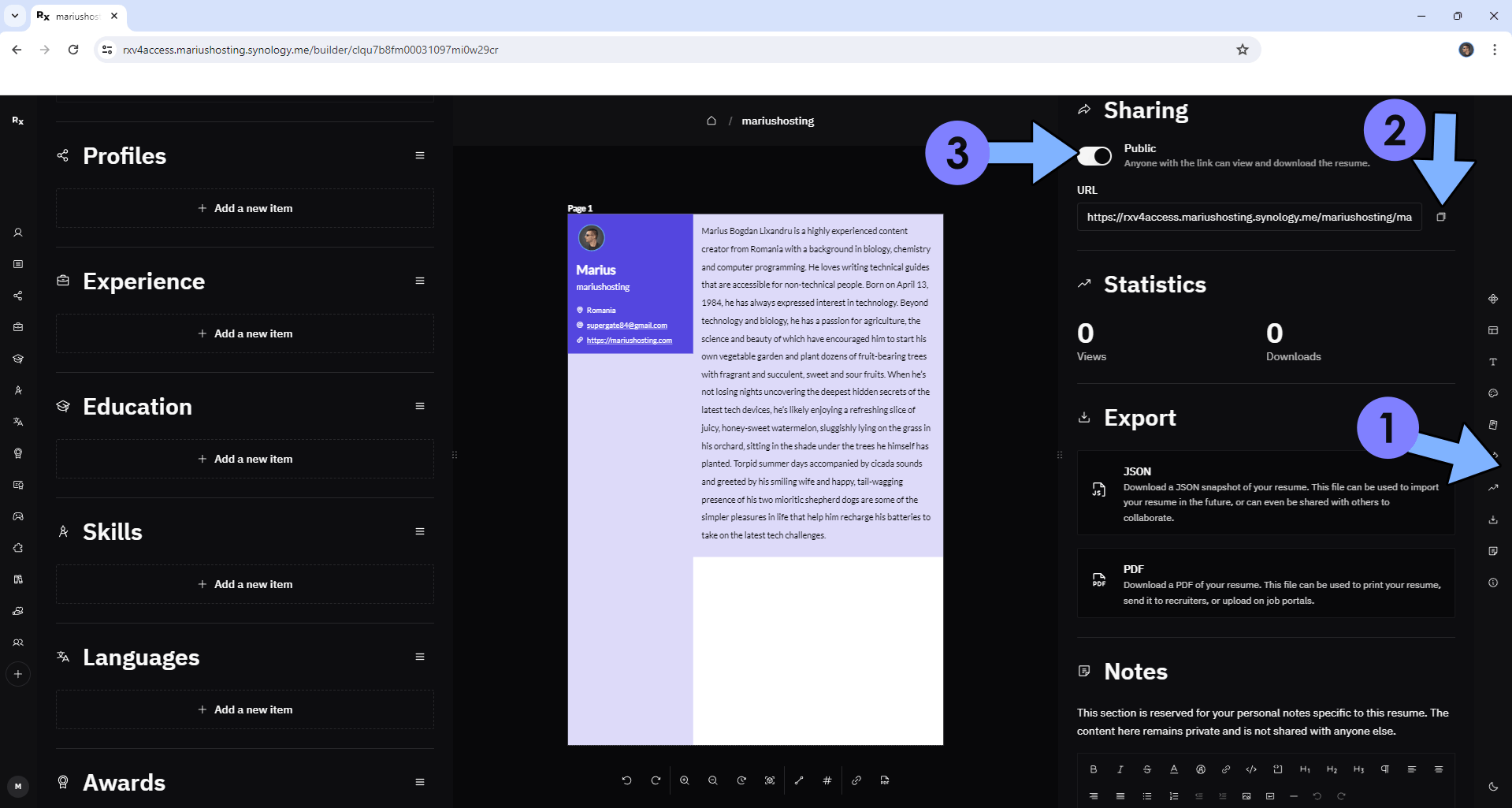
STEP 34
Share your public URL link that you have previously copied at STEP 33 with your friends or potential employers. Follow the instructions in the image below.

STEP 35
If you want to disable user registration in Reactive Resume V4 after registering the first user, just change the following line in the compose at STEP 18:
DISABLE_SIGNUPS: falsewith the following one:
DISABLE_SIGNUPS: trueClick update the stack to update the settings. From this point on, any user that will try to register a new account in Reactive Resume V4 will be rejected.
Enjoy Reactive Resume V4!
If you encounter issues by using this container, make sure to check out the Common Docker issues article.
Note: Find out how to update the Reactive Resume V4 container with the latest image.
Note: How to Back Up Docker Containers on your Synology NAS.
Note: Can I run Docker on my Synology NAS? See the supported models.
Note: How to Free Disk Space on Your NAS if You Run Docker.
Note: How to Schedule Start & Stop For Docker Containers.
Note: How to Activate Email Notifications.
Note: How to Add Access Control Profile on Your NAS.
Note: How to Change Docker Containers Restart Policy.
Note: How to Use Docker Containers With VPN.
Note: Convert Docker Run Into Docker Compose.
Note: How to Clean Docker.
Note: How to Clean Docker Automatically.
Note: Best Practices When Using Docker and DDNS.
Note: Some Docker Containers Need WebSocket.
Note: Find out the Best NAS Models For Docker.
Note: Activate Gmail SMTP For Docker Containers.
This post was updated on Friday / December 5th, 2025 at 7:20 PM
